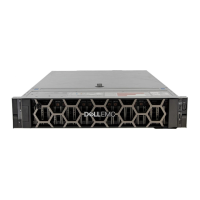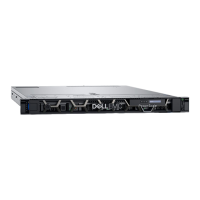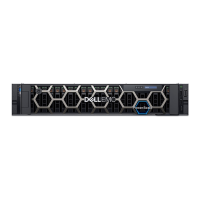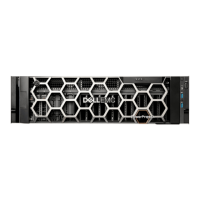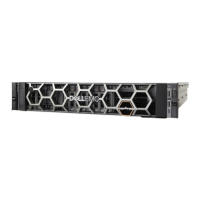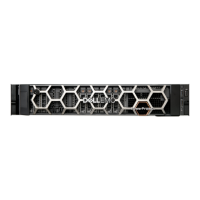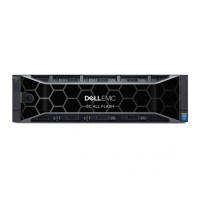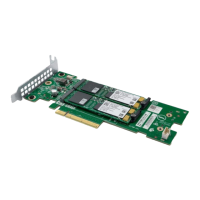• Controller A port 2: 10.10.10.100
• Controller A port 3: 10.11.10.120
• Controller B port 2: 10.10.10.110
• Controller B port 3: 10.11.10.130
• Netmask: For IPv4, subnet mask for assigned port IP address.
• Gateway: For IPv4, gateway IP address for assigned port IP address.
• Default Router: For IPv6, default router for assigned port IP address.
4. In the Advanced Settings section of the panel, set the options that apply to all iSCSI ports:
Table 4. Options for iSCSI ports
Enable Authentication (CHAP) Enables or disables use of Challenge Handshake Authentication Protocol. Enabling or disabling
CHAP in this panel updates the setting in the Configure CHAP panel (available in the Hosts topic by
selecting Action > Configure CHAP. CHAP is disabled by default.
Link Speed
• auto—Auto-negotiates the proper speed.
• 1 Gb/s—Forces the speed to 1 Gbit/sec, overriding a downshift that can occur during auto-
negotiation with 1 Gb/sec HBAs. This setting does not apply to 10 Gb/sec SFPs.
Enable Jumbo Frames Enables or disables support for jumbo frames. Allowing for 100 bytes of overhead, a normal frame
can contain a 1400-byte payload whereas a jumbo frame can contain a maximum 8900-byte
payload for larger data transfers.
NOTE: Use of jumbo frames can succeed only if jumbo-frame support is enabled on all
network components in the data path.
iSCSI IP Version Specifies whether IP values use Internet Protocol version 4 (IPv4) or version 6 (IPv6) format. IPv4
uses 32-bit addresses. IPv6 uses 128-bit addresses.
Enable iSNS Enables or disables registration with a specified Internet Storage Name Service server, which
provides name-to-IP-address mapping.
iSNS Address Specifies the IP address of an iSNS server.
Alternate iSNS Address Specifies the IP address of an alternate iSNS server, which can be on a different subnet.
CAUTION: Changing IP settings can cause data hosts to lose access to the storage
system.
5. Perform one of the following:
• To save your settings and continue configuring your system, click Apply.
• To save your settings and close the panel, click Apply and Close.
A confirmation panel is displayed.
6. Click Yes to save your changes. Otherwise, click No.
Configure two ports as FC and two ports as iSCSI per controller
Perform the following steps on each controller to configure two ports as FC and two ports as iSCSI:
1. In the Welcome panel, select System Settings, and then click the Ports tab.
2. From the Host Post Mode list, select FC-and-iSCSI.
NOTE:
Ports 0 and 1 are FC ports. Ports 2 and 3 are iSCSI ports.
3. From the Port Settings tab, set the FC port-specific options:
• Set the Speed option to the proper value to communicate with the host, or to auto, which auto-negotiates the proper link speed.
A speed mismatch prevents communication between the port and host. Set a speed only if you want to force the port to use a
known speed.
• Set the FC Connection Mode to either point-to-point or auto:
• point-to-point: Fibre Channel point-to-point.
• auto: Automatically sets the mode that is based on the detected connection type.
4. Set the port-specific options:
Perform system and storage setup
37
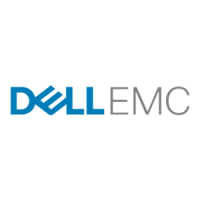
